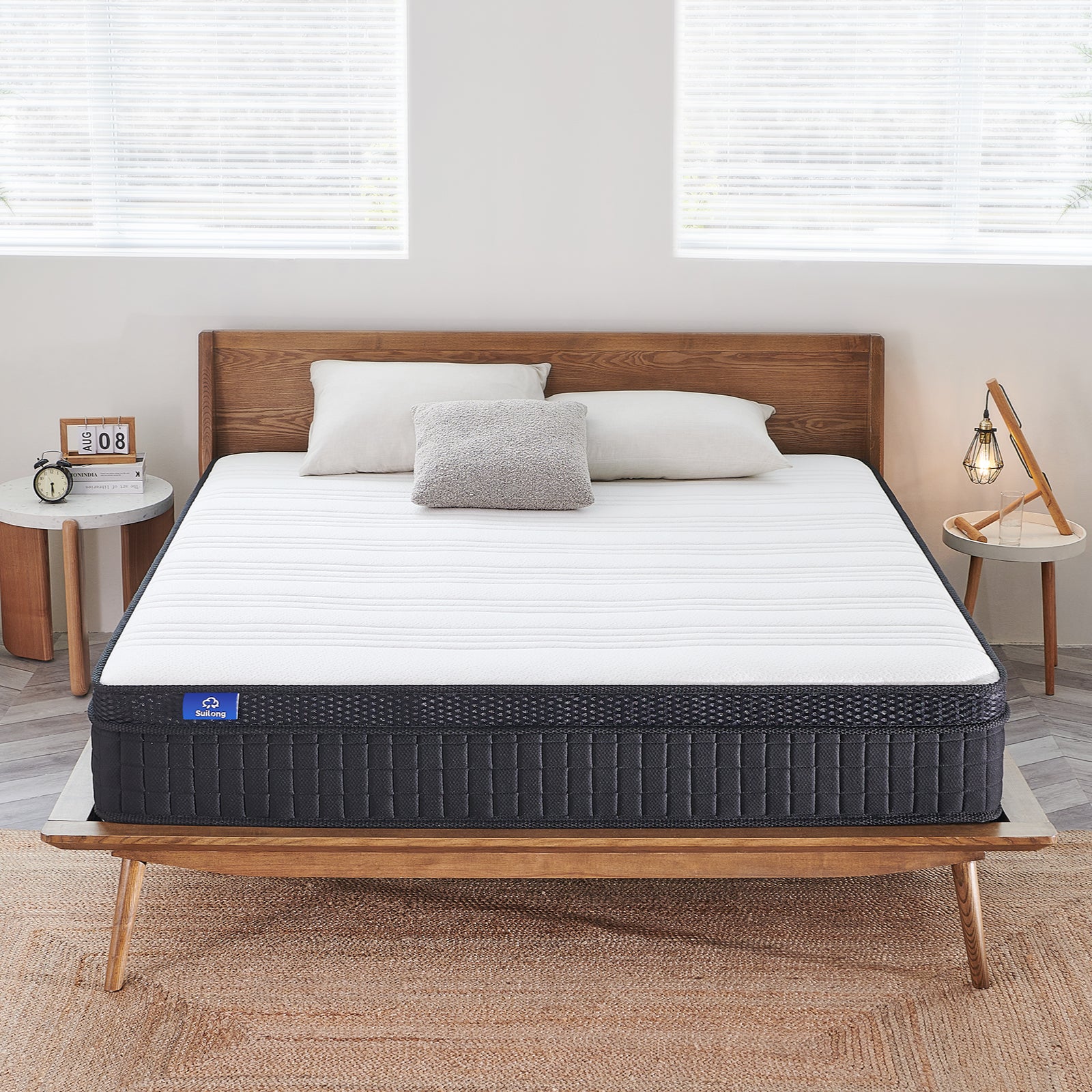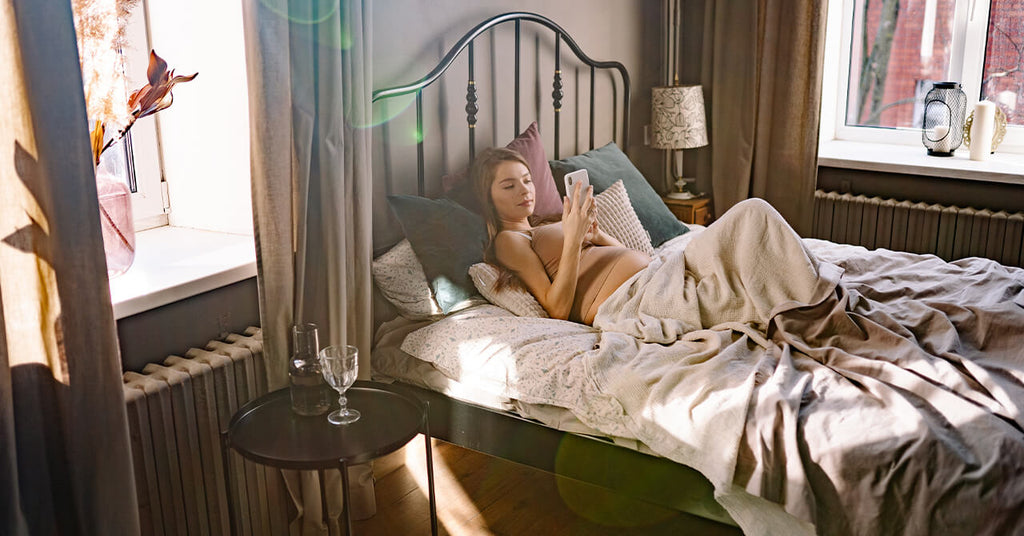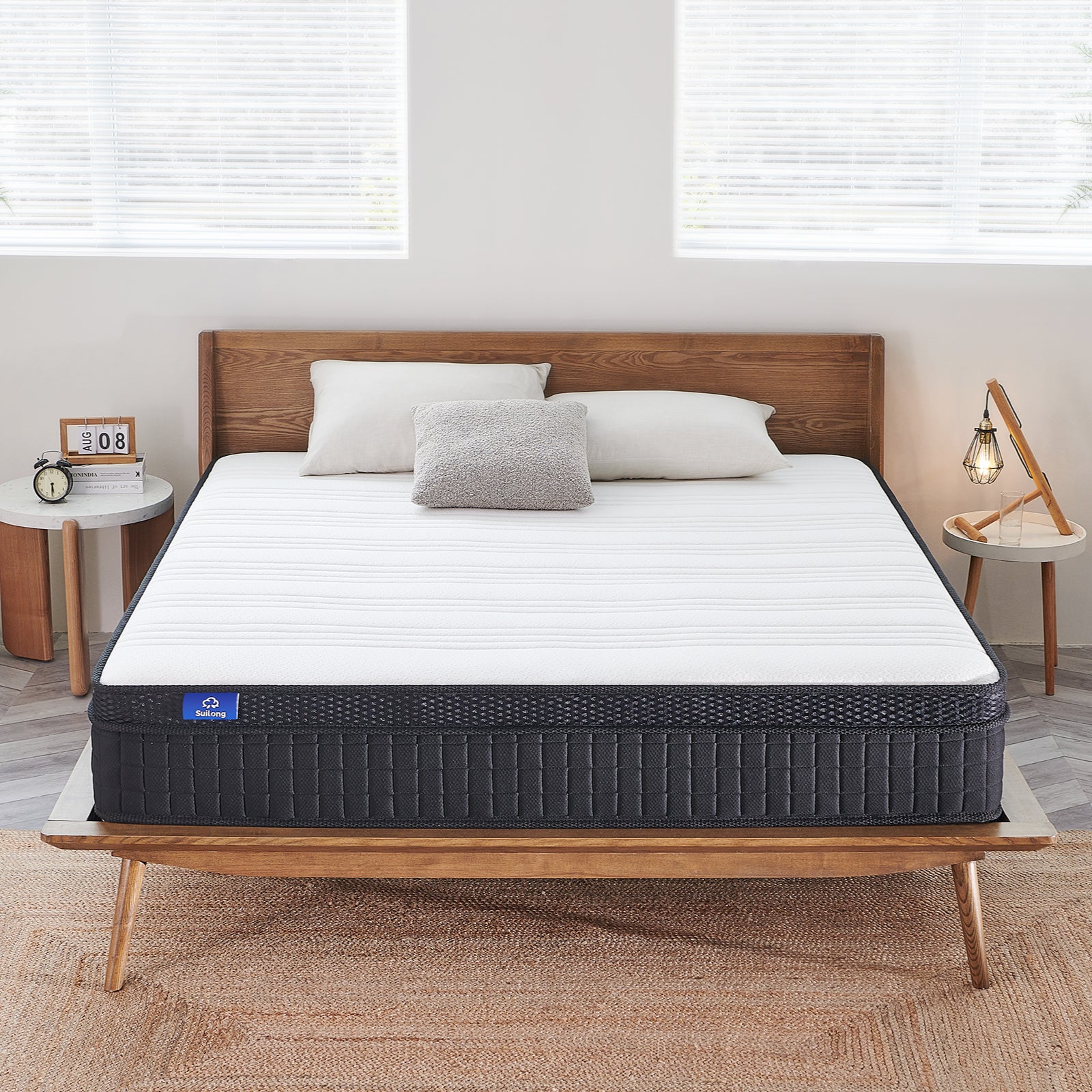Best Sleeping Position For Lower Back Pain

Explore the vital connection between sleep positions and lower back pain. Understand common pain triggers and discover practical, immediate solutions for relief.
1. The link between low back pain and sleep position
Whenever I wake up feeling discomfort in my lower back, I often think about what is causing this pain. After some in-depth knowledge and research, I realized that there is a strong relationship between low back pain and sleep position.
Common causes of low back pain:
1. Muscle or ligament strain
Due to poor daily habits or sports injuries, the muscles and ligaments of the back may suffer strains that cause pain.
2. Intervertebral disc problems
Discs are soft cushions between the vertebrae, and if they are damaged or become herniated, they may squeeze nearby nerves, leading to pain.
3.Bad sitting and standing posture
Maintaining an incorrect sitting or standing posture for a long period of time may put extra pressure on the lower back, which in turn can lead to pain.
How sleep position affects low back pain:
1. Sleeping on the back
This is one of the more recommended sleeping positions, especially for people with low back pain. However, when lying on your back, there should not be too much space between your lower back and the mattress. I recommend placing a thin pillow or towel under the lower back to help maintain the natural curve of the spine.
2. Side Lying
Side lying is another sleeping position that is friendlier to the lower back, but care should be taken to keep your legs straight and avoid leaning your upper body forward or backward. Consider placing a pillow between your knees to minimize twisting of the lower back.
3. Prone
Although some people prefer this sleeping position, it is not usually recommended because it can cause discomfort in the lower back and neck. If you really prefer this position, consider placing a pillow on your lower abdomen to reduce the pressure on your lower back.
2. Analysis of the best sleeping position
1. Advantages and disadvantages of lying on the back and its effects on low back pain
Advantages of lying on your back:
- Support from lying on your back: Lying on your back provides even support for the entire spine. The head, neck and lower back are supported by the mattress, reducing pressure on the spine.
- Pressure Point Relief: This position helps to distribute the weight of the body, relieving the burden on key pressure points.
- Maintains a neutral spine: Maintaining the natural curve of the spine helps to alleviate the discomfort associated with low back pain.
The shortcomings of lying on your back:
- Breathing Problems: For people with breathing problems or snoring, lying on your back may aggravate these conditions.
- Lower back support: A pillow under the knees is needed to provide extra support.
Solution:
- Use a knee pillow: placing a pillow under the knees can help maintain the natural curve of the lower back.
- Choosing the right mattress: A mattress that provides adequate support is key and can help relieve pressure on the lower back.
2. Advantages and disadvantages of side-lying and suggestions for adjustment
Benefits of side-lying:
- Reduces pressure on the spine: Lying on your side helps to reduce pressure on the spine, especially in the lower back area.
- Improved Breathing: For people with breathing problems, lying on the side reduces pressure on the airway and promotes better breathing.
- Reduces pressure on the heart: Side lying helps to reduce pressure on the heart.
Disadvantages of side-lying:
- May cause shoulder and neck pain: Side-lying may cause additional stress in the shoulders and neck.
- May Affect Spine Alignment: Without proper support, side-lying may result in a misaligned spine.
Adjustment Recommendations:
- Use Supportive Pillows: Choose a pillow that provides enough support to help keep your neck in alignment with your spine.
- Place a pillow between your knees: This reduces friction between your knees while helping to maintain alignment of your lower back and hips.
- Choose a mattress for side sleepers: Choose a mattress that provides enough support and is soft enough to protect your shoulders and hips from pressure.
3. Slight leg lifts: tips to relieve low back pain
The Positive Effects of Leg Raises on Low Back Pain
Micro leg lifts are a simple but extremely effective way to relieve low back pain. Here are the positive effects of this maneuver on low back pain:
- Reduces pressure on the spine:
When the legs are slightly raised, the space between the lumbar vertebrae is enlarged, effectively reducing the pressure and burden on the spine.
- Improves blood circulation:
By slightly lifting the legs, you can improve blood circulation in the lower body and relieve leg and lower back pain caused by maintaining a posture for a long time.
- Relieves muscle tension:
This action can help the lower back muscles relax and relieve muscle tension and pain.
Specific operation methods and precautions
- Suitable leg lift height:
When choosing the height of the micro leg lift, you need to find a position that is most comfortable for you. Generally speaking, a lift of 20-30 centimeters is ideal. You can use a special leg raising pad or simply use a pillow or cushion at home for support.
- Correct leg raising posture:
During leg lifts, make sure that your knees are slightly bent, as this will prevent your leg muscles from becoming too tense. It is also important to keep the upper body flat and not twisted to maintain the natural curve of the entire spine.
- Duration:
The duration of each slight leg lift is recommended to be 20 to 30 minutes, adjusted according to your personal comfort level. This is most effective when performed before bed or when you feel pain in your lower back.
- Frequent Adjustments:
Avoid maintaining a posture for long periods of time, you should slightly adjust the position of your legs and lower back every once in a while to reduce localized pressure and burden.
- Choice of aids:
Choosing the right leg lifting aid for you, such as a leg lifting pad, requires attention to the softness and height of the material to ensure that it can provide adequate support without causing additional discomfort.
Additional Advice
The use of the micro leg lift method can also be paired with some easy lower back stretches to further relax the muscles and ligaments in the lower back. In addition, maintaining a regular routine and a good diet are also key to preventing and relieving low back pain.
4. Sleep Adjustment for Neurogenic Low Back Pain
Correlation between neuropathic low back pain and sleeping position
Neuropathic low back pain is usually triggered by compression or irritation of the nerves in the spine. During our sleep, inappropriate postures may aggravate the compression of the nerves, thus leading to increased low back pain.
- Deep understanding of pain
Before choosing the right sleep position for you, you should first understand the type and location of your pain. Different types of pain may require different sleep adjustments.
- Analyze the association between pain and sleep
Pain often intensifies at night, probably because the body is more relaxed at this time of the day and nerves are more easily stimulated. Understanding this can help us better adjust our sleep position to reduce pain.
Suggestions and considerations for adjusting sleep position
The right sleep position can provide great relief from neuropathic low back pain. Here are just a few sleep positions and adjustments that can help alleviate neuropathic low back pain.
- Adjustment of supine position
Lying on your back is an ideal sleep position because it distributes your body weight evenly and reduces pressure on your spine. When lying on your back, you can place a small pillow under your lower back and knees to provide extra support for your lower back while maintaining the natural curve of your spine.
- Side Lying Adjustment
Side lying is also a good option. To relieve pressure on your lower back, place a pillow between your knees. It is also important to choose a pillow that provides adequate support to prevent the head from drooping and causing discomfort to the neck and spine.
- Avoid prone position
Prone lying usually exacerbates low back pain because it increases the pressure on the spine. If you are used to lying on your back, try changing your sleeping habits to lie on your back or side.
- Choose a proper mattress and pillow
Choosing a moderate mattress and pillow is the key to relieving neuropathic low back pain. The mattress should not be too firm or too soft, and needs to be able to provide adequate support while maintaining the natural curve of the spine. The pillow should also be at a moderate height to keep your neck comfortable.
5. Sleep guidelines for sciatica patients
The main symptoms of sciatica
Sciatica often bothers me and its main symptoms include:
- Painful sensations: I often feel pain on the side of my leg from my buttock to my hip, which can feel either sharp or burning, or even like an electric shock at times.
- Numbness and tingling: I experience numbness and tingling in my legs and toes, making me very uncomfortable.
- Muscle weakness: I find that the muscles in my legs with sciatica become very weak.
Recommended Sleeping Positions for Sciatica Sufferers
In order to alleviate the symptoms of sciatica, I have made a series of adjustments to my sleeping position, which I hope can give you some help:
Sleeping on your side
- Keep the spine neutral: I find that lying on your side reduces the pressure on your spine, but it is important to keep your spine in a neutral position to avoid twisting.
- Use a knee pillow: placing a soft pillow between your knees can help keep your hips, pelvis and spine aligned and reduce pain.
Back Sleep
- Use pillow support: I would put pillows under my knees to reduce pressure on the sciatic nerve.
- Choose the right pillow: Head support is also crucial, I would choose a pillow that is neither too high nor too low to ensure that my head and neck are properly supported.
Avoid prone sleeping
The prone position increases pressure on the spine and sciatic nerve, so I try to avoid this sleep position.
6. Daily prevention: sleep habits to reduce low back pain
Changing Sleep Habits to Prevent Low Back Pain
Daily sleep habits play a vital role in preventing low back pain. Adjusting your daily sleep habits to avoid ongoing low back pain problems is something everyone needs to be aware of.
- Maintain a steady sleep schedule: I always maintain a steady sleep schedule so that my body's biological clock adapts and develops a good sleep routine. In this way, I can get enough rest every day so that the muscles and vertebrae in my lower back can fully recover.
- Choose the right pillow: I use a pillow that provides good neck support and avoids excessive bending of the cervical vertebrae, thus reducing the pressure on the lumbar region.
- Avoid using too soft mattress: The hardness of the mattress is an important factor affecting the quality of sleep. I choose a mattress with moderate hardness to maintain the natural curve of the spine.
Daily Stretching Instruction in Bed
When I first wake up in the morning, I usually perform some stretches in bed. These movements can help wake up my body and relieve any tension and stiffness in the lower back that may have accumulated overnight.
- Lumbar Rotation Stretch:
I lie flat on my back with my legs slightly bent.
Place your hands on either side of your body.
Slowly rotate your legs to one side and turn your head in the opposite direction.
Maintain this position for a few seconds and then turn to the other side.
- Abdominal Stretch:
I would support my body with my elbows and keep my upper body off the bed.
Keep your lower body on the bed and bend your upper body slightly upward.
This action can stretch the muscles of the waist and abdomen.
- Leg straightening stretch:
I lie flat on my back with one leg bent and the other leg slowly straightened.
Grab the bent leg with your hand and gently pull it toward your chest.
Hold for a few seconds, then switch to the other leg.
With these simple stretches, I was able to effectively relieve tension and pain in my lower back and get a great start to my day. These moves are simple, but very helpful in keeping your lower back healthy. I hope you will try them too and feel the big difference these small movements can make!
7. Choosing the right mattress: the "pillars" of sleep
The impact of mattresses on sleep posture
- Mattress firmness: Choosing the firmness of the mattress is crucial to maintaining the stability of your sleeping position. A mattress that is too firm will increase pressure points on the body, leading to sleep discomfort. A mattress that is too soft will not provide adequate support and may lead to discomfort and low back pain during sleep.
- Mattress Construction: The construction of a mattress affects how supportive and comfortable it is. Different mattress constructions will provide different levels of support, with some being more suitable for side sleepers and others more suitable for back sleepers.
How to choose the right mattress for back pain relief
- Understand your sleeping habits: Choose a mattress based on your sleeping habits (e.g., common sleeping positions) and health conditions (whether you have low back pain, etc.).
- Trial Laying: Trial laying is a key step in choosing a mattress, through which you can feel the firmness and comfort of the mattress more intuitively, and find the one that suits you best.
Advantages of Suilong mattress
- Expertise: Suilong mattresses have 25 years of experience in mattress manufacturers. Each mattress is professionally designed, combining biological science, orthopedic design and environmentally friendly materials.
- Quality Assurance: Suilong mattresses are ISO9001 and SGS quality management system certified, ensuring that every mattress meets high quality standards.
Suilong Nimbus 12 Inch Hybrid Mattress Features and User Feedback
- Hybrid Construction Design: The Nimbus 12 Inch Hybrid Mattress combines the comfort of memory foam with the support of springs for a variety of sleeping positions.
- Temperature Regulation: The gel-infused memory foam technology used in the mattress regulates body temperature so you can enjoy a comfortable night's sleep in any season.
- User Reviews: Numerous user feedbacks have shown a significant improvement in sleep quality and relief from problems such as low back pain after using the Nimbus 12 Inch Hybrid Mattress.

Suilong Nimbus
12 Inch Hybrid Mattress
Look no further than the Suilong Nimbus 12-inch Hybrid Mattress.
Buy NowEmbrace pain-free mornings by optimizing your sleep posture. For ultimate comfort and support, consider mattresses like the Suilong Nimbus 12 Inch Hybrid Mattress.
FAQs
Q: What are the common causes of lower back pain after waking up?
A: Waking up with lower back pain is often caused by poor sleep positions, unsupportive mattresses, muscle strains, or underlying medical conditions like herniated discs.
Q: How does sleeping on one's stomach impact lower back pain?
A: Stomach sleeping can exacerbate lower back pain as it flattens the natural curve of the spine, placing strain on the back muscles. Using a pillow under the abdomen might offer relief.
Q: Can the choice of mattress influence lower back pain?
A: Absolutely. A mattress that provides adequate support and alignment to the spine is crucial. It should neither be too soft nor too firm to prevent or relieve lower back pain.
Q: Is there a specific pillow recommended for individuals with chronic lower back pain?
A: Using a lumbar pillow or a rolled-up towel under the lower back can provide additional support. Memory foam pillows that conform to the shape of the lower back are also beneficial.
Q: What immediate steps can I take at home to alleviate lower back pain during sleep?
A: Adjusting your sleep position, using supportive pillows, performing gentle stretches before bed, and investing in a supportive mattress can significantly alleviate lower back pain during sleep.
-
Posted in
best sleeping position, Choosing the Right Mattress, Lifestyle, Mattress thickness, Mattress Tips, Side Sleepers, Sleep Experts, sleep health, sleep position, Sleep Tips, sleeping positions


















